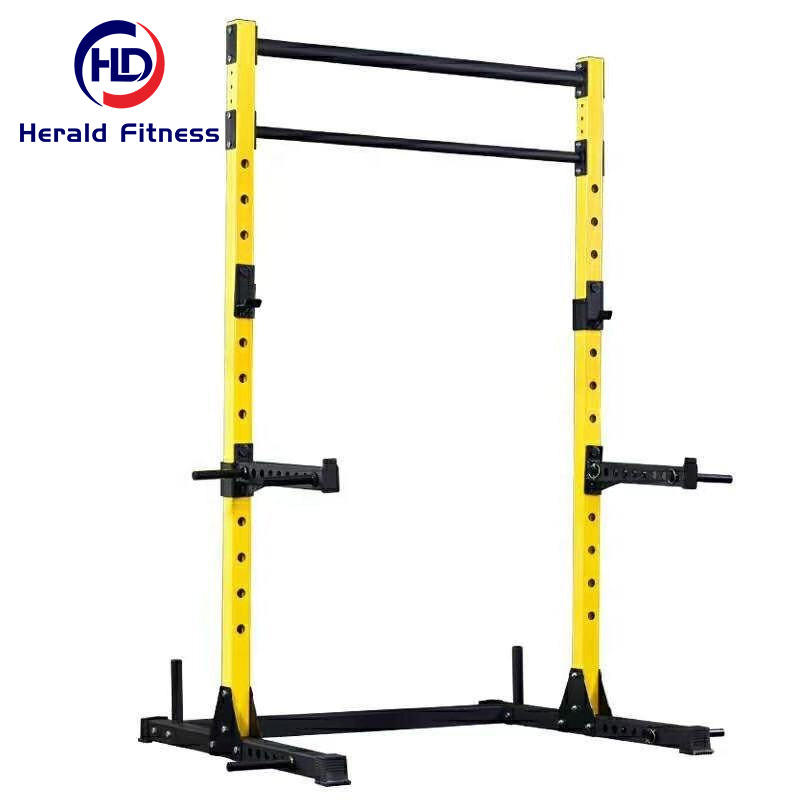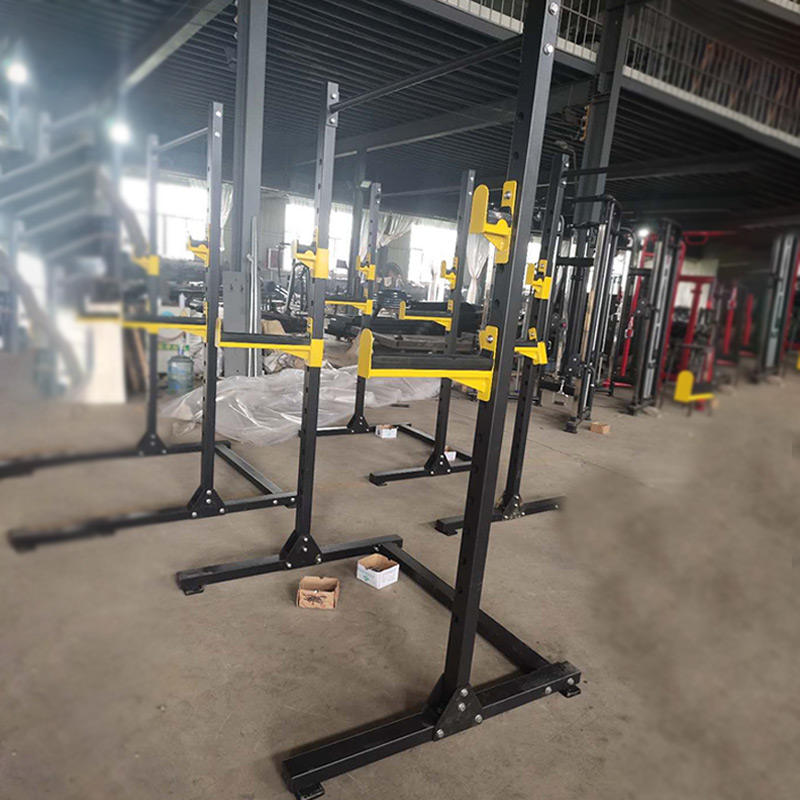A Free Squat Rack, also known simply as a squat rack or power rack, is a fundamental piece of gym equipment designed primarily for performing squats safely and effectively. Here’s a detailed description of its features and functionalities:
Key Features of a Free Squat Rack:
- Structure and Design:
- Sturdy Frame: Constructed from heavy-duty steel or alloy, providing stability and durability to support heavy weights.
- Uprights: Vertical posts with adjustable heights, allowing users to set the barbell at different positions to suit various exercises and user heights.
- Safety Features: Equipped with safety catches or spotter arms that can be adjusted to catch the barbell if the lifter fails to complete a repetition, ensuring safety during solo workouts.
- Primary Functions:
- Squatting: Provides a secure platform for performing squats, including back squats, front squats, and overhead squats.
- Bench Press: Doubles as a bench press station when combined with an adjustable bench, enabling flat, incline, and decline bench presses.
- Additional Features:
- Pull-Up Bar: Some models include an integrated pull-up bar for performing various grip pull-ups and chin-ups, targeting the back, shoulders, and arms.
- Plate Storage: Integrated pegs or holders for storing weight plates, keeping them organized and easily accessible during workouts.
- Resistance Band Pegs: Some racks have pegs or hooks for attaching resistance bands, adding variable resistance to exercises like squats and bench presses.
- Safety and Comfort:
- Stability: Non-slip rubber feet or floor anchors ensure stability, preventing the rack from shifting during exercises.
- Padding: Padded J-hooks or barbell rests protect the barbell and reduce noise during lifts, enhancing user comfort.
- Benefits of Using a Free Squat Rack:
- Versatility: Supports a wide range of exercises, including squats, bench presses, pull-ups, and various accessory movements.
- Safety: Provides adjustable safety features such as spotters or safety arms to prevent injuries during heavy lifts, allowing for confident and effective workouts.
- Strength Development: Facilitates strength gains in lower body muscles (quadriceps, hamstrings, glutes) and upper body muscles (chest, shoulders, back) through compound and accessory exercises.
- Space Efficiency: Maximizes space in home gyms or training facilities by consolidating multiple exercise functions into one piece of equipment.
- Usage and Applications:
- Strength Training: Ideal for individuals looking to build muscle strength, improve muscular endurance, and enhance overall fitness through compound movements and isolated exercises.
- Fitness Programs: Suitable for users of all fitness levels, from beginners to advanced lifters, due to its adjustable settings and versatile exercise options.
- Functional Training: Used in functional fitness programs and athletic training to develop functional strength, stability, and power.
- Maintenance:
- Regular Cleaning: Wipe down the rack after each use to maintain cleanliness and hygiene.
- Component Inspection: Periodically check all moving parts, bolts, and welds for wear and tear, ensuring the rack remains safe and functional.
- Lubrication: Apply lubricant to moving parts as recommended by the manufacturer to maintain smooth operation and extend the equipment’s lifespan.
In summary, a Free Squat Rack is a versatile and essential piece of equipment for strength training, offering a variety of exercises to target both upper and lower body muscles. It provides users with safety features, exercise versatility, and space efficiency, making it suitable for home gyms, commercial gyms, and fitness facilities aiming to maximize their training capabilities.


















































Reviews
There are no reviews yet.